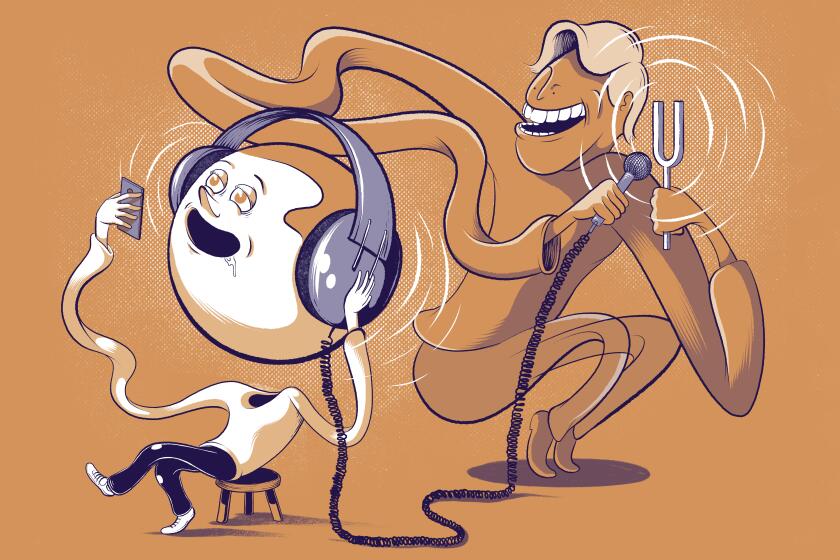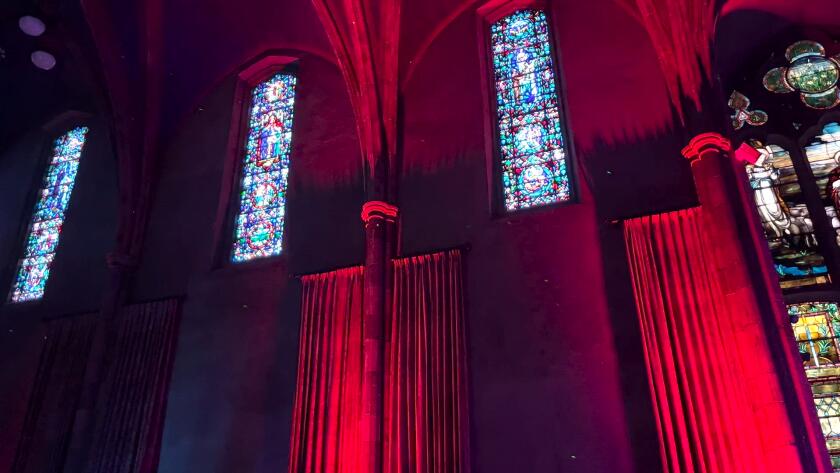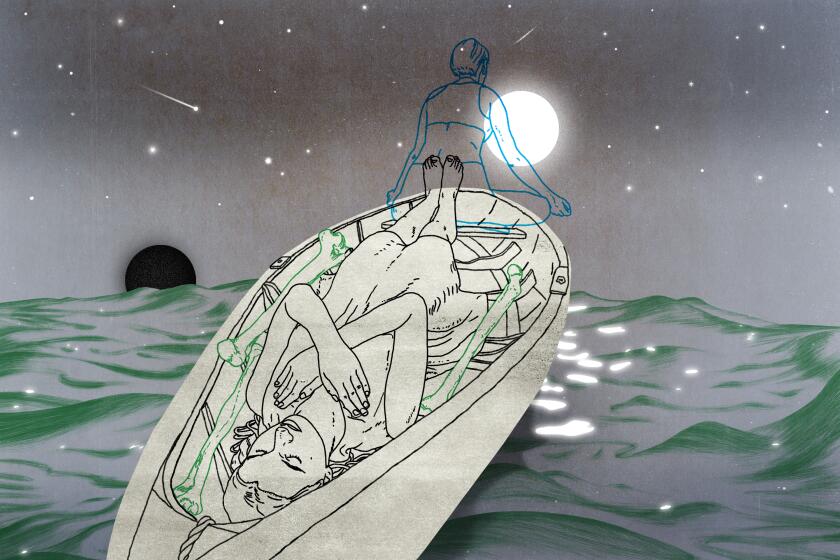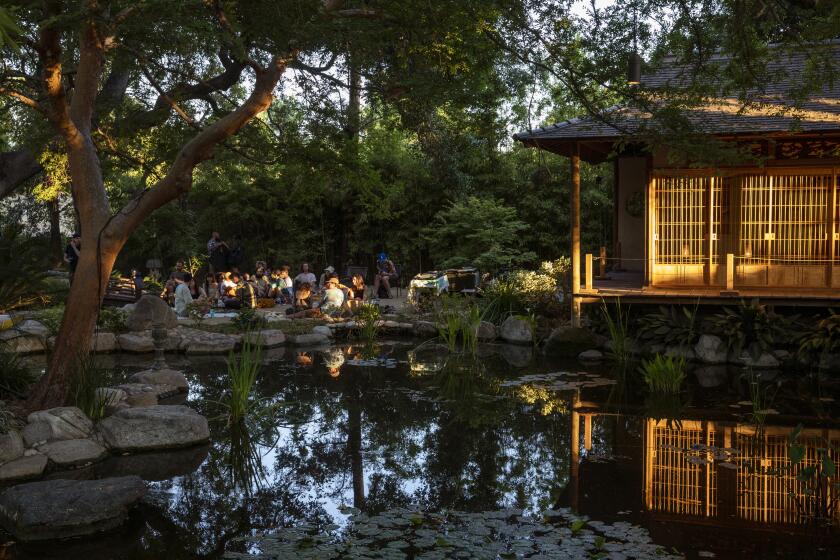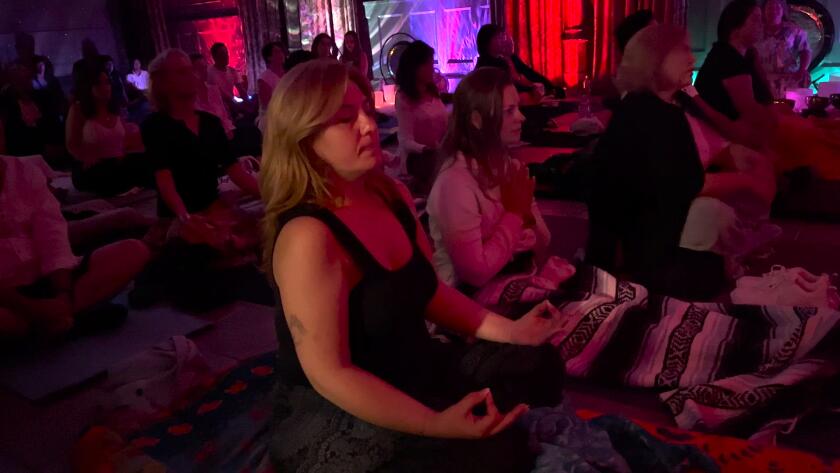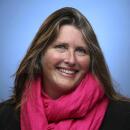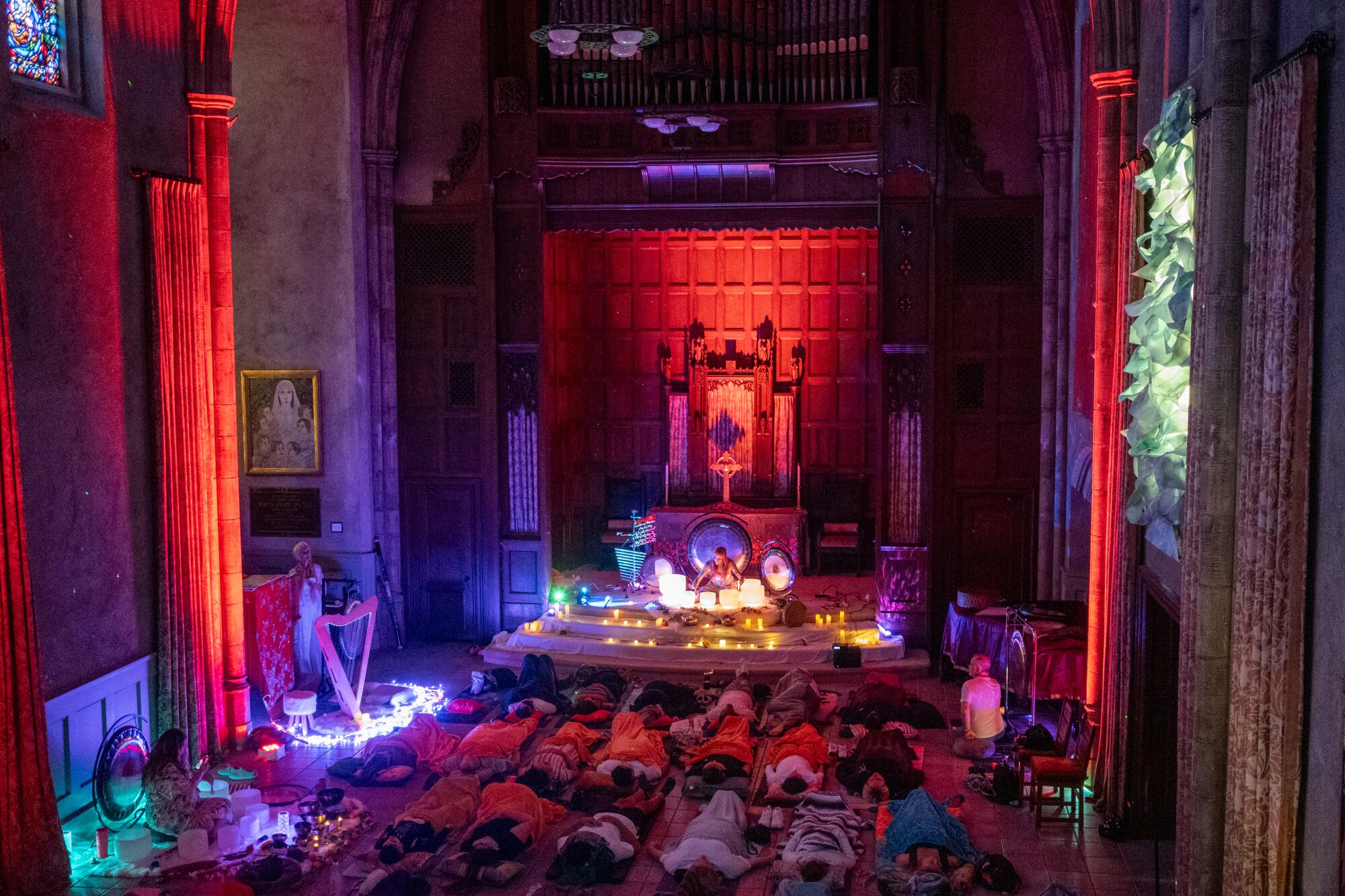
- Share via
Adrienne Bawa pulled into the parking lot of the First Congregational Church of L.A., her seven-seater Volvo filled with fabric, gongs and lights.
It was two hours before the registered nurse and sound healer would welcome more than 50 people to a sound bath in the Koreatown church’s soaring neo-Gothic Shatto chapel. There was a lot of work to do before they arrived.
“It looks beautiful already,” said Bawa, a petite redhead and founder of Sound Bird Healing, gazing up at the church’s graceful stone pillars, vaulted ceiling and stained glass windows. “But wait until you see what we do with it.”
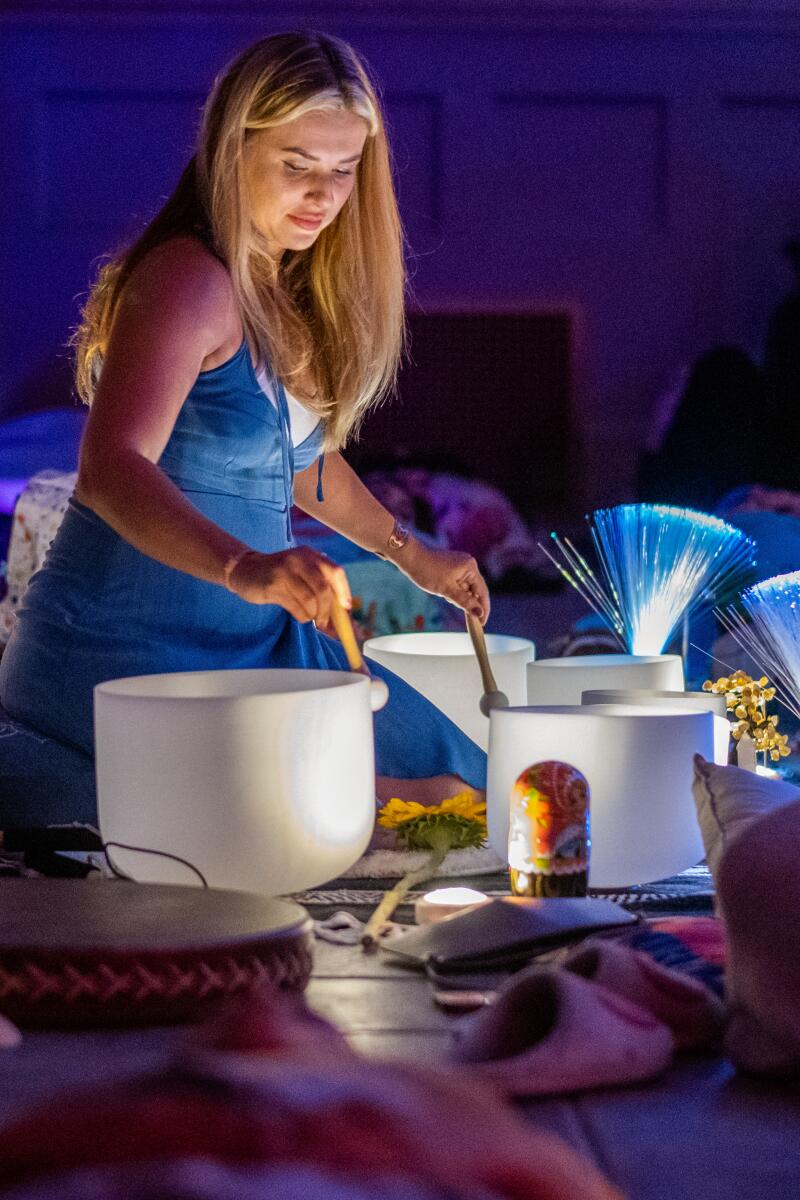
Yana Horowitz, 36, of Calabasas, plays the crystal singing bowls during a sound bath. (Francine Orr / Los Angeles Times)
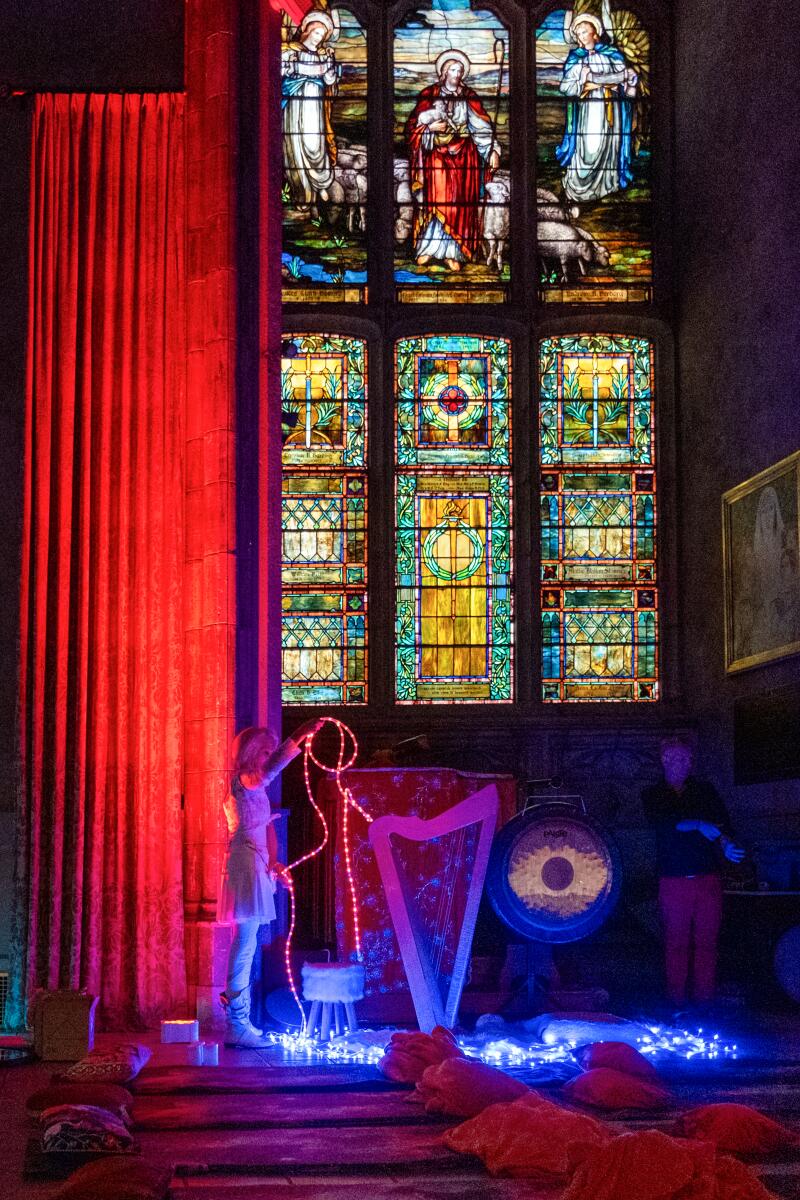
Lahila Oppenheimer finishes getting ready as guests arrive for a sound bath. (Francine Orr / Los Angeles Times)
Two hours later the traditional chapel had been transformed into a vivid, flickering, cosmic sanctuary. The altar was lit in hues of red and pink (a nod to Venus being in retrograde), galaxy lights swirled on the ceiling and padded mats were laid out on the stone floor along with pillows, eye masks and blankets. By the time the first rhythmic sounds of Bawa’s skin drum began to fill the room, the space felt like a cross between a yoga class and an enchanted sleepover party.
Spiritual? Maybe. Religious? Not so much.
It may seem incongruous to hold a sound bath — which Bawa describes as a sonic experience that uses live instruments to facilitate and enhance meditative states — at the oldest Protestant church in Los Angeles. But sound bath practitioners say church buildings, which were designed with both spirituality and acoustics in mind, are a natural home for these events.
Some healers and musicians say that listening to specific sound frequencies can reduce stress and even detoxify cells. They just can’t agree on which frequency.
“There are so many people who have come to that space and been in a place of healing and transformation, so the energy is there,” Bawa said. “And architecturally, churches are designed to transmit sound.”
The dome ceiling and pillars that stick out from the walls of the Shatto chapel are not just decorative, she explained. They also serve as natural amplifiers, creating reverb by giving the instrumental sounds multiple surfaces to bounce off. “They didn’t have PA systems centuries ago, so they worked with the architecture,” she said.
It also helps that churches have historically been spaces meant for spirituality and prayer, said Lynda Arnold, founder of Sonic Devas Divine Feminine Sound Meditation Experience, who is hosting a sound bath at First Presbyterian Church in Santa Monica on Aug. 27. “Churches are definitely the place to invite people to be still, and to be in a contemplative moment,” she said.
There’s also the issue of size. Guy Douglas held monthly sound baths at Grace Cathedral in San Francisco for more than 1,000 guests before the pandemic.
“It’s beautiful and awe-inspiring, and the acoustics are really amazing,” he said, “but our whole thing was finding venues that were big enough to hold a lot of people.”
While many churches have resisted opening up their spaces to sound bath practitioners, others have welcomed this alternative use of their sacred spaces.
“It suits us very well because we do think about the mind-body-spirit connection,” said the Rev. Laura Fregin, CEO and senior minister at First Congregational Church of Los Angeles. “Having Adrienne’s sound baths here fulfills a big piece of that for us.”
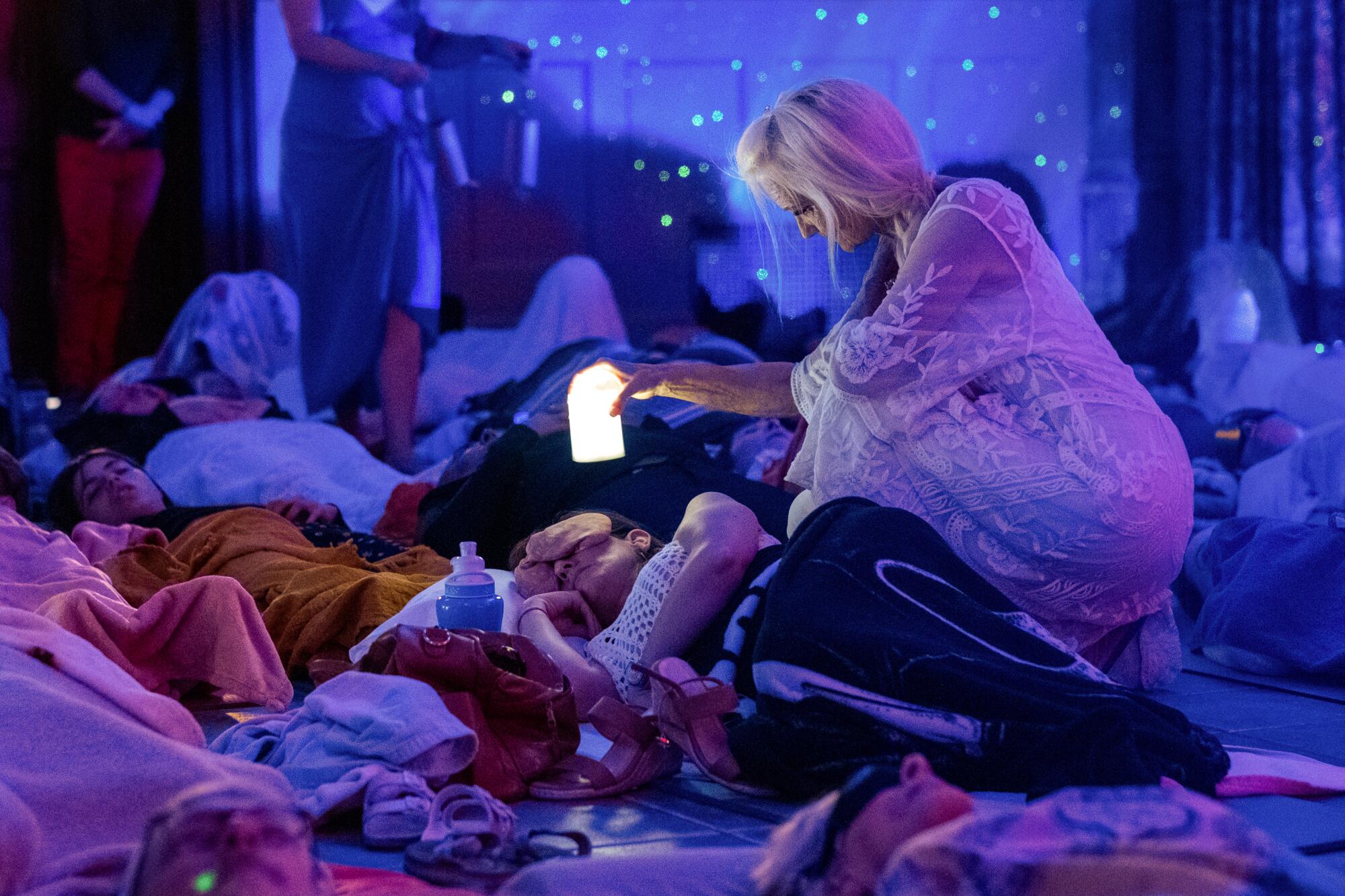
A massage for the brain
The specifics of sound baths are infinitely varied — they might include electronic music, voice, wind instruments, gongs, drums, singing bowls and chimes. They can be held just about anywhere — living rooms, parks, hospitals, gyms, jails or yoga studios. There may be just one practitioner, or several.
For the sound bath at First Congregational Church, which cost between $55 and $66 depending on whether you brought your own mat and pillow, Bawa brought together six sound healers — some experienced, some apprenticing. Together they led attendees on a sonic journey that began with drums and the hum of singing bowls, then crescendoed into the shimmering roar of gongs.
A death meditation may sound morbid, but often it’s a celebration of life. At a Pasadena shop, you can experience a moving death meditation for yourself.
Later, the musicians shook wide flat ocean drums and rain sticks over the heads of attendees, tinkled wooden beads and rang gentle chimes that called to mind childhood memories, fairies and the way light sparkles on the ocean surface. When it was all over, Bawa led everyone in the room through three loud “Oms.”
“It’s like a massage for the brain,” said Tatiana Arefyeva, a reiki master and tarot reader who attended the event.
Bawa has approached several other churches about holding sound baths in their spaces, but most of them turned her down.
“There is a lot of resistance,” she said. “Some of them have questions about what is a sound bath and is it a witchy ‘woo-woo’ thing. Others are worried about how it would be perceived by their members. Some of them were like, ‘We don’t understand the gongs or bowls.’”
First Congregational Church of L.A., where Bawa has been holding sound baths for two years, was more welcoming. “A lot of their senior ministry came with an open heart and an open mind,” she said.
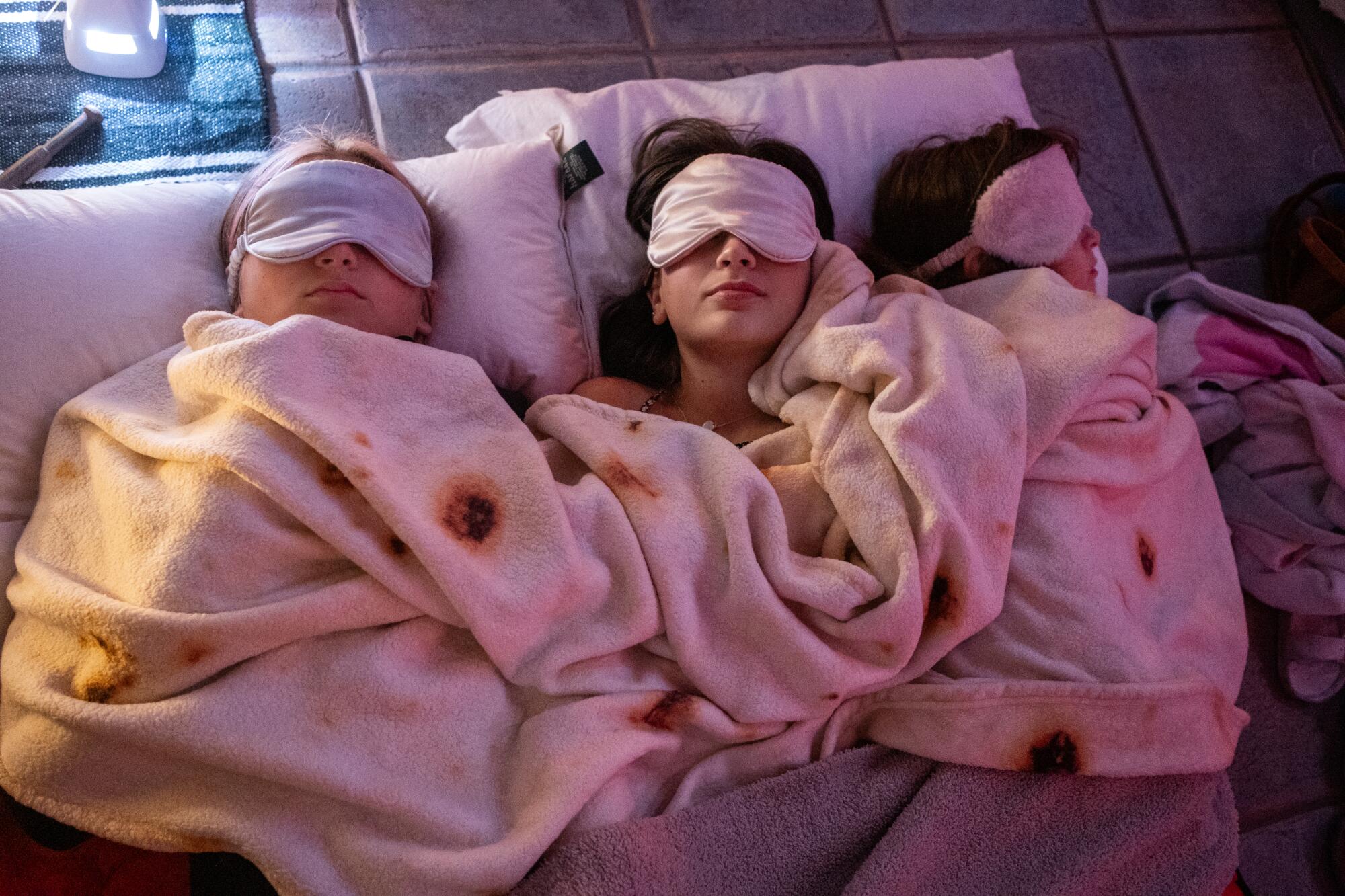
Fregin, the church’s senior minister, had already attended a few sound baths by other practitioners before Bawa approached her. “I was just so struck by the feeling of the living, breathing peace in all of us,” Fregin said of the experience. “The energy you share in a sound bath is just really incredible.”
In the future, she hopes the Shatto Chapel will host yoga and tai chi classes as well.
“It gives people the opportunity to be in a sacred space without needing to believe a certain thing or pass a religious test,” Fregin said. “This building is a wonderful gift and it’s really our desire to share it with the city.”
Allowing Bawa to rent the space also has exposed more traditional churchgoers to an experience they might not otherwise have sought out, she said. Last summer Fregin gave a ticket to the mother of one of her staffers, a practicing Christian who had grown up in a very religious home. It was the first time the woman had ever been to a sound bath. The next day she told Fregin that it had been one of the most profound experiences of her life and helped her heal wounds she’d had from childhood.
“You don’t go into a sound bath expecting something like that to happen,” Fregin said, “but what you can do is invite people into experiences that have the potential to be transformative.”
‘Modern sacred music’ for the soul
Noah Klein has been bringing new age and experimental musicians to churches since 2019, when he started working with the concert series Ambient Church, and more recently as co-founder of Floating, an L.A.-based collective that presents “sonic gatherings” (they don’t call them sound baths) in beautiful and interesting places in several cities across the country.
Floating is a Los Angeles collective that hosts sound baths and sonic events in unique settings like a Japanese garden in Pasadena and a Malibu ranch.
Musicians who use modular synths, strings and elongated vocals are a natural fit for church spaces, he said, because the music they play is not that different from what has traditionally filled those rooms. “It’s like modern sacred music, but it’s sacred to the spirit rather than sacred toward a specific version of faith,” Klein said.
But he also noted that community churches have a long history of hosting decidedly nonspiritual secular music as well, particularly all-ages punk and hardcore shows.
“You can pick up any zine on all-ages music and they will talk about reaching out to your local community center, rec center or church,” Klein said. “Fugazi played churches. This has been going on since at least the ’80s.”

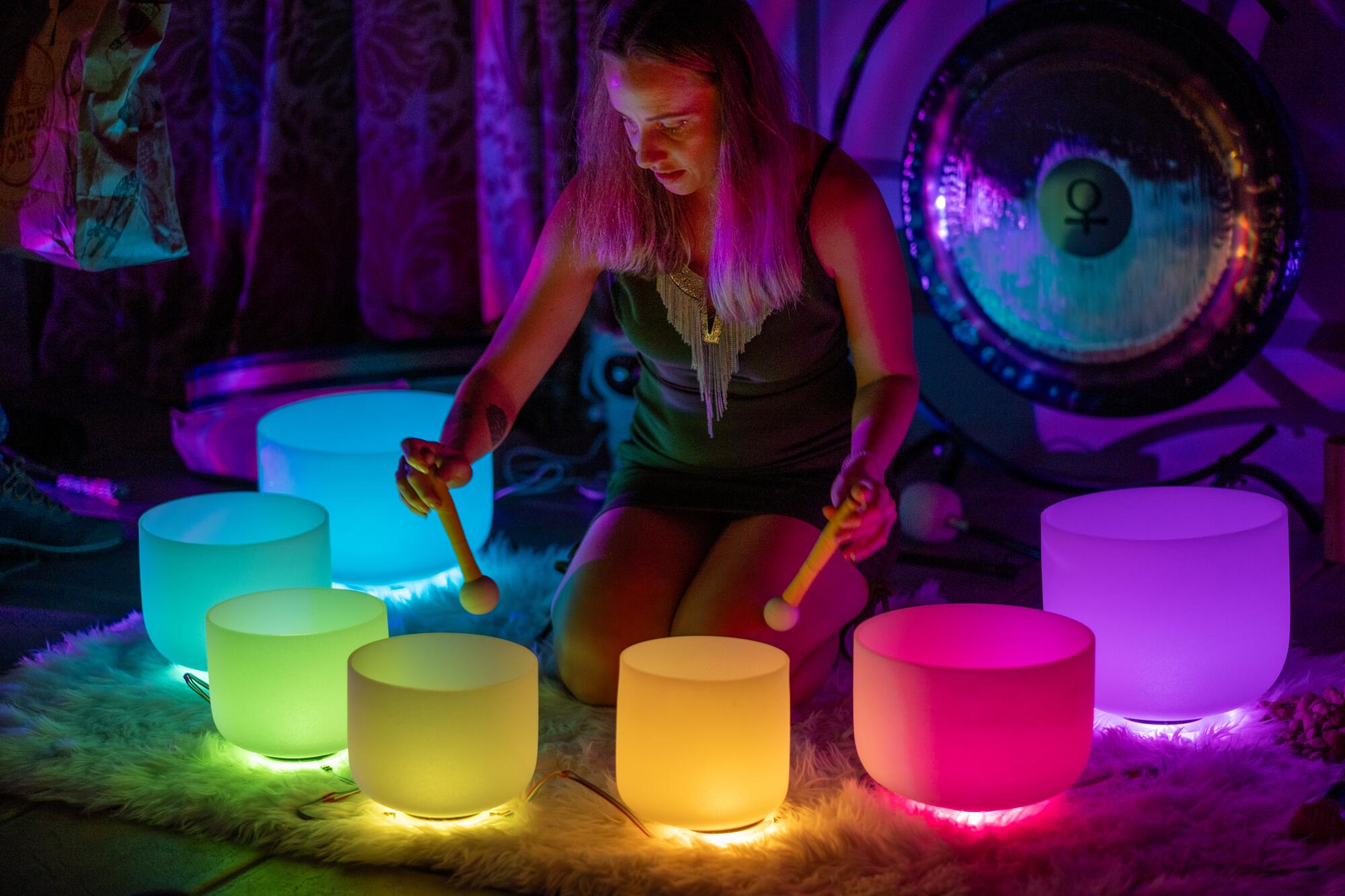
Dan Dick, lead pastor at the People’s United Methodist Church in Wisconsin, who has written about how churches can make better use of their buildings, said the modern practice of churches hosting sound baths is reminiscent of when churches used to host coffeehouses in the ’90s.
“It’s trying to make the church a more comfortable, real place where people come for a variety of reasons and not just for a traditional Sunday morning service,” he said. “I’ve seen more progressive churches offer things like sound baths as a way to say that not everybody encounters spirit the same way.”
He added that some of the instruments associated with sound baths have a deep history in the Christian tradition. “Many of the early monasteries and convents took vows of silence, but that did not include singing, bells or gongs,” he said.
Back at the First Congregational Church, nobody was ready to get off their mat when the sound bath ended. People who had been laughing with their friends and taking selfies an hour and a half earlier looked glassy-eyed and peaceful, as if they were coming out of a trance.
Arefyeva, the reiki master, said she had looked up the First Congregational Church before she came to make sure she would feel comfortable attending a sound bath in a Christian chapel. She was assured by what she read.
“This church is not super traditional or strict,” she said. “Here, all faiths are accepted. I know not every church would be on board.”
Desiree Noel, 40, one of the evening’s instrumentalists, also said it was important to her to be in a church that welcomes everyone.
“It heightens the vibrations,” she said.
More to Read
Sign up for The Wild
We’ll help you find the best places to hike, bike and run, as well as the perfect silent spots for meditation and yoga.
You may occasionally receive promotional content from the Los Angeles Times.
